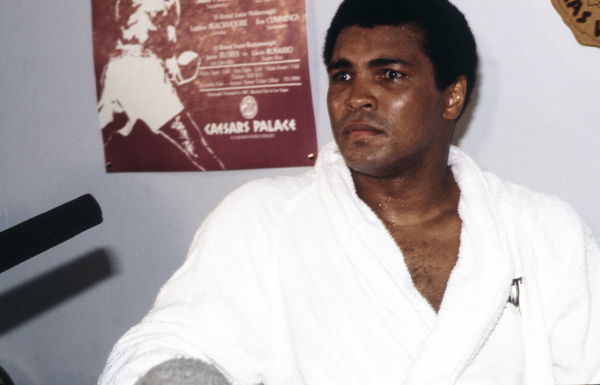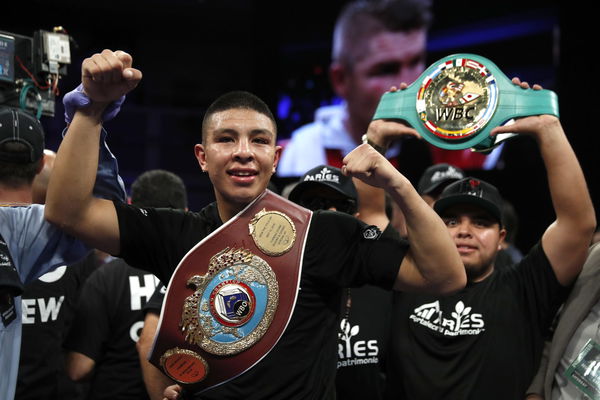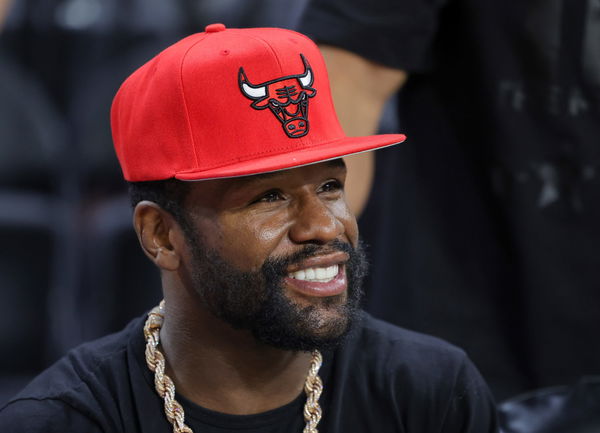What Was Muhammad Ali’s Cause of Death?

Follow Us

via Getty
American heavyweight boxer Muhammad Ali talks to reporters during a break in training, Las Vegas, Nevada, September 1982. (Photo by Camerique/Getty Images)
Muhammad Ali, born Cassius Marcellus Clay Jr. on January 17, 1942, in Louisville, Kentucky, is widely regarded as one of the greatest boxers of all time. Even years after his demise, he is still one of the most highly regarded boxers to ever step into the squared circle. Though his extraordinary career was not the only reason for this, other than his impressive boxing skills, he won the hearts of the fans through his charisma and the impact he had on society. He burst forth on the boxing scene as a brash and confident young fighter and quickly made a name for himself with his lightning-fast footwork.
His signature style, characterized by the phrase “float like a butterfly, sting like a bee,” remains a cherished aspect among boxing enthusiasts. Notably, at the tender age of 22, he claimed the heavyweight championship by besting Sonny Liston in a highly publicized bout. Furthermore, his unapologetic persona, witty banter, and knack for generating hype for his fights continued to stand unparalleled. Even in retirement, his influence on the sport endured inspiring fighters like Mike Tyson, who ascended to become the youngest heavyweight champion.
What caused Muhammad Ali’s death?
ADVERTISEMENT
Article continues below this ad
Three-time world heavyweight boxing champion, Muhammad Ali, passed away on June 3, 2016. A family member had shared that the legend had died due to septic shock from unspecified natural causes. He had been admitted to the hospital with respiratory problems. Septic shock occurs when the body’s response to an infection leads to severe dysfunction of organs. Septic shock can be life-threatening and is often the result of complications arising from an infection in another part of the body.
— Hana Ali (@Hanayali) June 4, 2016
Furthermore, sepsis can affect anyone following an infection, with higher vulnerability among older adults, infants, individuals with weakened immune systems, and very young children. It’s also noteworthy that Ali’s battle with Parkinson’s disease played a huge role in the seriousness of his overall health problems. Parkinson’s disease is a progressive neurodegenerative disorder that affects movement and can lead to a range of motor and non-motor symptoms. It is a chronic condition that requires long-term management and can lead to various problems as it progresses. Ali’s daughter, Hana, shared her father’s final moments in a tweet, recounting how, despite multiple organ failures, his heart continued to beat for 30 minutes.
Trending

“She’s a Sweetheart”: Jaime Munguia’s Wife Alejandra Steals the Show Ahead of Canelo Alvarez Showdown
May 04, 2024 01:11 PM EDT

Jaime Munguia’s Wholesome Moment With His Wife and Baby Goes Unnoticed Due to Golden Boys’ Embarrassing Mistake, Fan Points Out
May 05, 2024 06:40 AM EDT

“He’s Not Stuck in Dubai”: Floyd Mayweather’s $30,000 Act of Kindness Towards Homeless Men in LA Raises Questions About Gervonta Davis’ Bombshell Claim
May 03, 2024 06:58 AM EDT

Terence Crawford Responds to Kendrick Lamar’s Drake Diss Track With Bold Declaration
May 02, 2024 03:35 PM EDT

“I’ll Delete It”: Wife Fernanda Gomez Instantly Regrets Messing With Canelo Alvarez After Light-Hearted Warning
May 04, 2024 09:32 AM EDT
Get instantly notified of the hottest Boxing stories via Google! Click on Follow Us and Tap the Blue Star.

Follow Us
How old was Muhammad Ali when he died?
Muhammad Ali was 74 years old at the time of his death. Born in Louisville, Kentucky, he had a remarkable life filled with numerous accomplishments inside and outside the boxing ring. His age at the time of his death highlighted the long-lasting effects of his battle with Parkinson’s disease. Ali’s influence and legacy extended far beyond the boxing ring, as he was a global symbol of athleticism, civil rights, and social justice.
When was Muhammad Ali diagnosed with Parkinson’s disease and what caused it?
Ali was diagnosed with Parkinson’s disease in 1984, three years after he retired from professional boxing. The exact cause of his Parkinson’s disease is a subject of debate among medical experts and scholars. While there is no definitive answer, several factors are believed to have contributed to his condition.
When did Muhammad Ali stop talking?
Muhammad Ali’s ability to speak declined as his Parkinson’s disease progressed. While he initially displayed the symptoms of slurred speech and slowed movements in the early stages of the disease, his communication difficulties became more pronounced as time passed. Parkinson’s disease affects the motor control of the muscles responsible for speaking, resulting in speech disturbances, such as softening of the voice and difficulty articulating words.
Ali’s struggle with speech became apparent in the 1990s, and by the time of his public appearances, he often relied on gestures, facial expressions, and his wife, Lonnie Ali, to help convey his thoughts to the world. Despite the challenges he faced, Ali remained an inspirational figure and continued to use his presence to advocate for various social and humanitarian causes.
How did Muhammad Ali get Parkinson’s?
Ali was diagnosed with Parkinson’s disease three years after he retired from professional boxing. This diagnosis was a significant turning point in his life, and it led to numerous speculations about the potential causes of the disease. Its exact cause is still not fully understood, but it is believed to result from a combination of genetic and environmental factors. In Ali’s case, the primary contributor to his disease was thought to be the repetitive head trauma he suffered during his boxing career.
ADVERTISEMENT
Article continues below this ad
Boxing involves taking blows to the head, and over time, this can lead to the accumulation of brain injuries. Ali’s fights, particularly his legendary bouts with Joe Frazier and George Foreman, were brutal and physically demanding. The punishment he endured in the ring was undoubtedly a contributing factor to his Parkinson’s disease.
The constant jarring and impacts on his head can lead to the degeneration of brain cells and the development of Parkinsonian symptoms. What do you think about the death of ‘the Greatest’?
Watch This Story: Mike Tyson Has Never Played His Own Game Now Worth $80,000
ADVERTISEMENT
Article continues below this ad
Edited by:
Gokul Pillai


